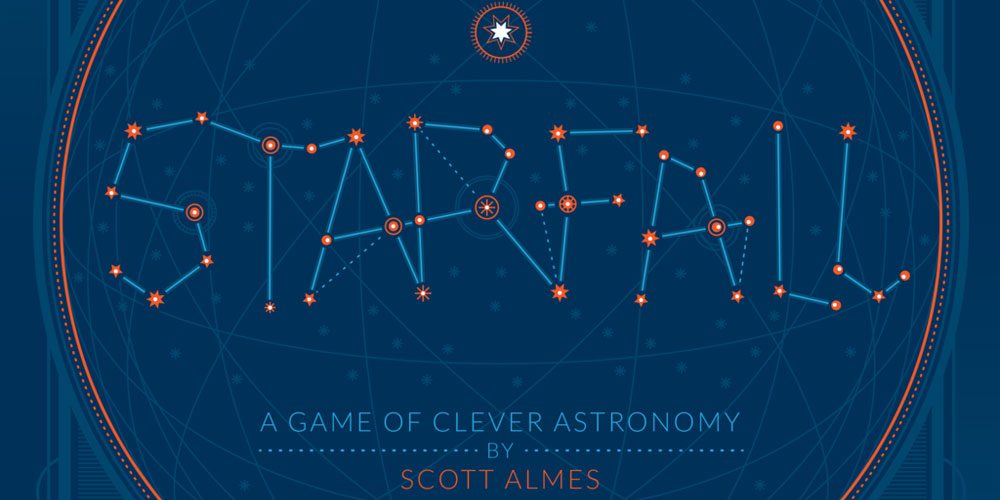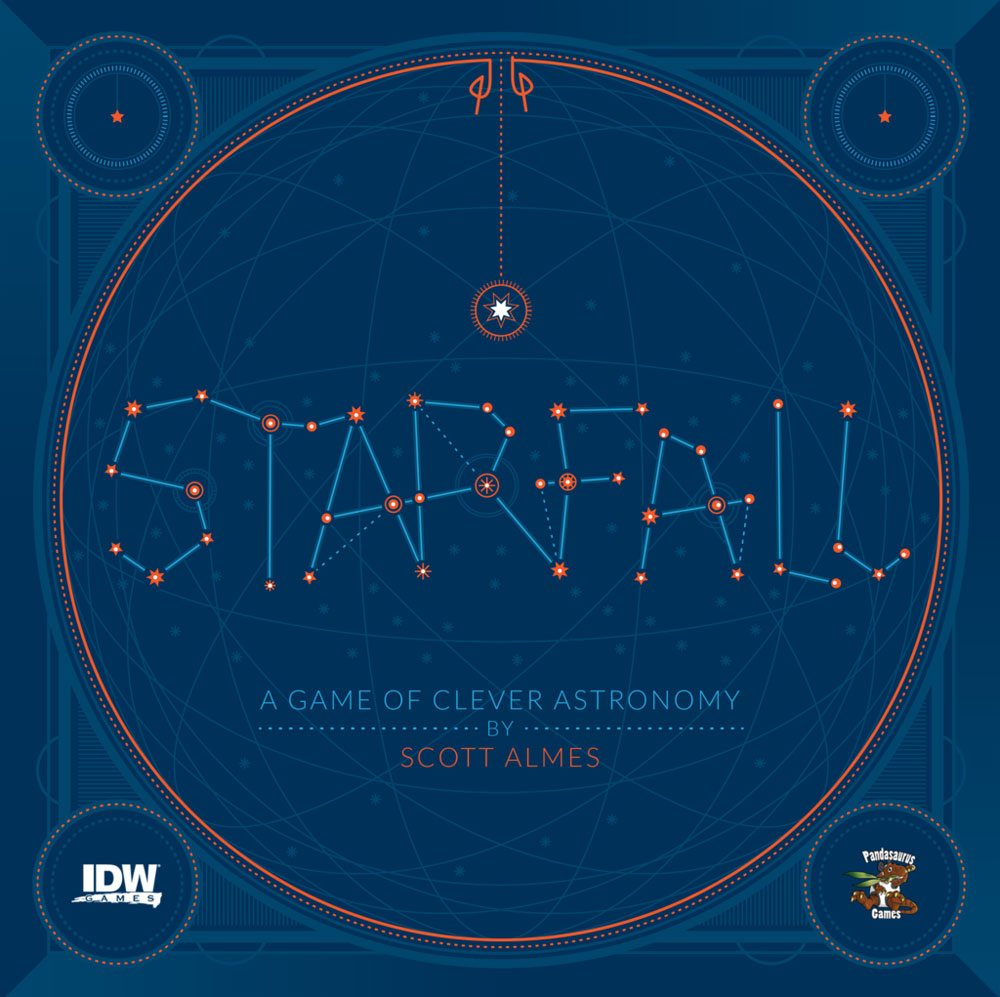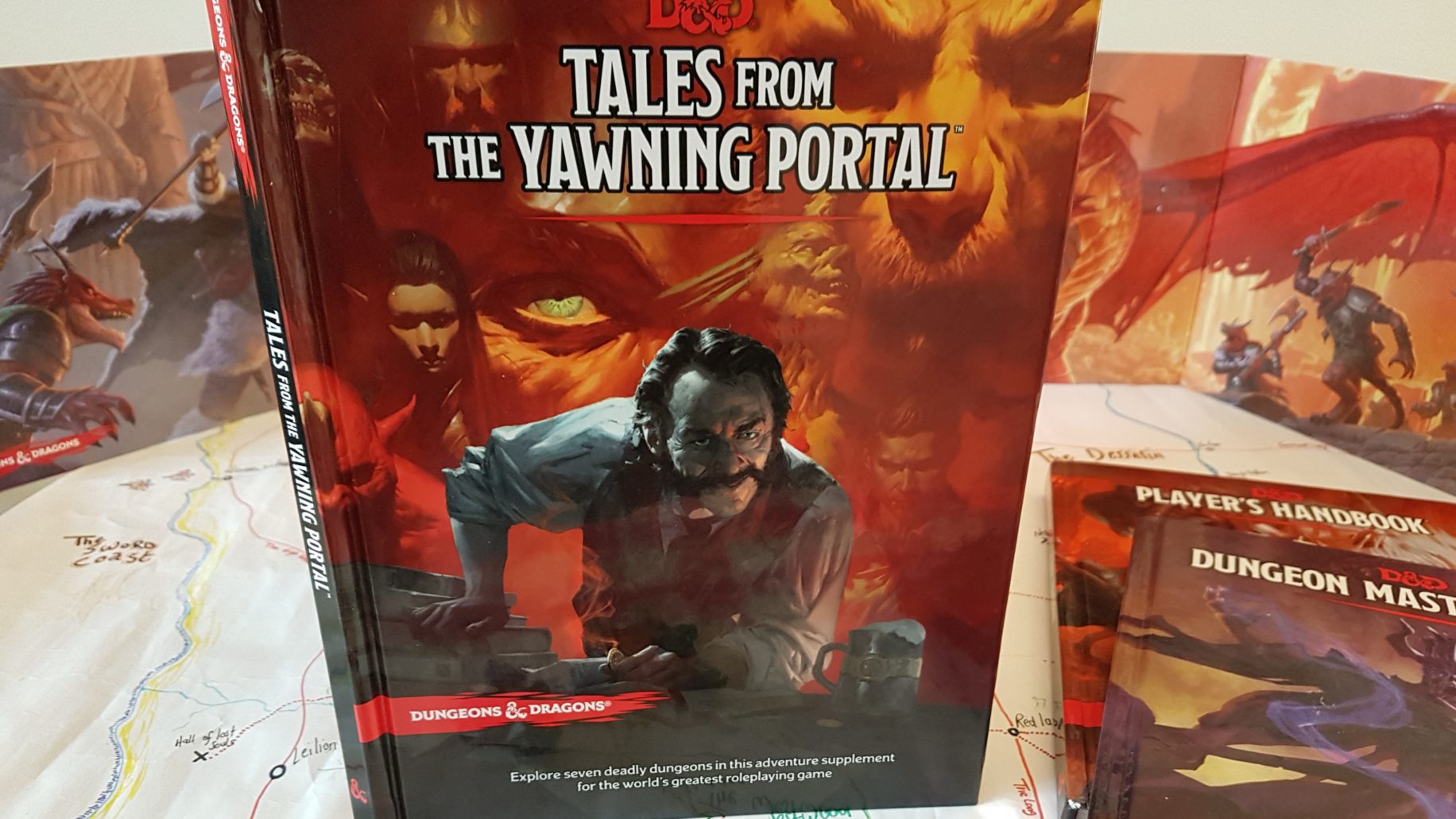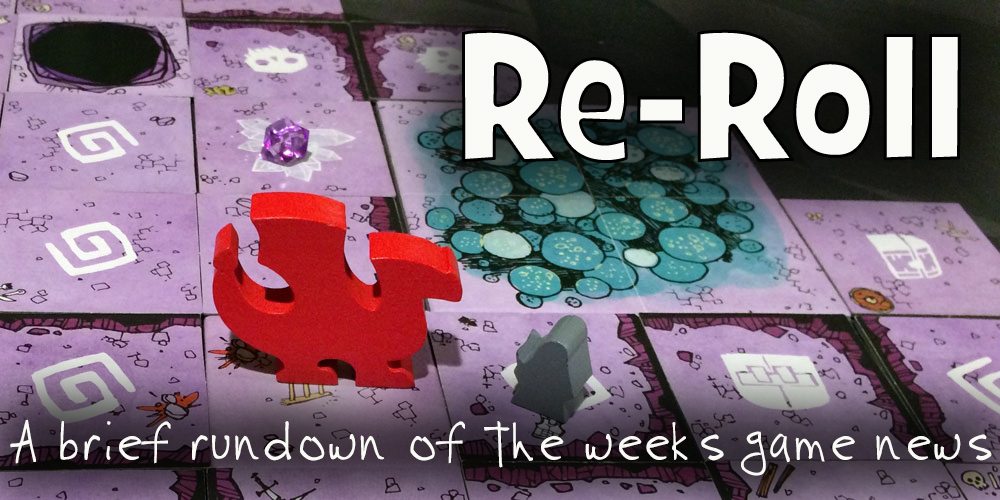At the Royal Hinterland Observatory, you and your fellow astronomers compete to discover the best patterns of heavenly bodies in this “game of clever astronomy”: StarFall.
At a glance: StarFall is a game by Scott Almes for 2 to 4 players, ages 13 and up, and takes about 30 minutes to play. It retails for $29.99 and is available now. The theme and gameplay would be fine for players as young as 8, though younger players may not grasp the strategy or may not be able to calculate scores as quickly during the game.
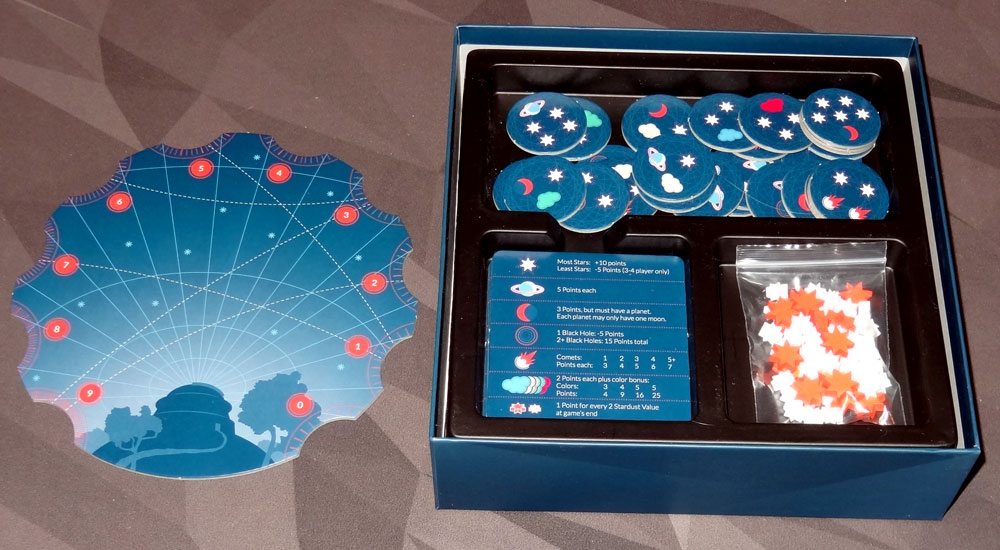
Components
- Stargazer board
- 27 Sky tiles
- 60 Stardust tokens (40 small white, 20 large orange)
- 4 Player Aid tiles
The components for StarFall are very pretty—there’s a blue/orange/white color palette for most of it, reflecting the box cover, that is fitting for a game about gazing at the night sky. There are nice background patterns and designs on the sky tiles and the stargazer board that are purely decorative, but add nicely to the astronomy theme. The stardust tokens are very nice: tiny wooden 7-pointed stars.
The cardboard components are pretty good quality—nothing spectacular or shoddy there—and the Player Aid tiles are coaster-sized cardboard rectangles rather than cards. However, there is a typo on the Player Aid tiles for the nebula scoring, which is rather unfortunate: it should list bonuses for 2, 3, 4 and 5 colors, but instead it references 3, 4, 5, and 5. It’s easy enough to correct, but seems a shame this wasn’t caught before printing.
My only real complaint is that the game really could have fit in a much smaller package. The Stargazer board is pretty, but really all you need is some way to have numbers from 0 to 9—the center of the board is not used at all. The plastic insert is so shallow that you expect there to be something under it. One of my friends, upon seeing the contents, said “that box is an insult to my shelf space.” The box itself is actually quite nice—it has spot UV printing so that the stars and various design elements are shiny and stand out, but it’s so unnecessary for it to be this size. If it were a smaller box, I’d also be more likely to take the game with me when traveling, but as it is I’d have to pull it out of the box.
How to Play
The goal of the game is to score the most points by collecting particular sets of heavenly bodies on sky tiles.
To set up, give each player 32 stardust points—7 white and 5 orange (which are worth 5 stardust each). The extra pieces form a bank used for making change.
Shuffle the sky tiles face-down and make a stack. If you’re playing with 2 or 3 players, you will remove a certain number of tiles before starting. Place the stargazer board in the center of the table.
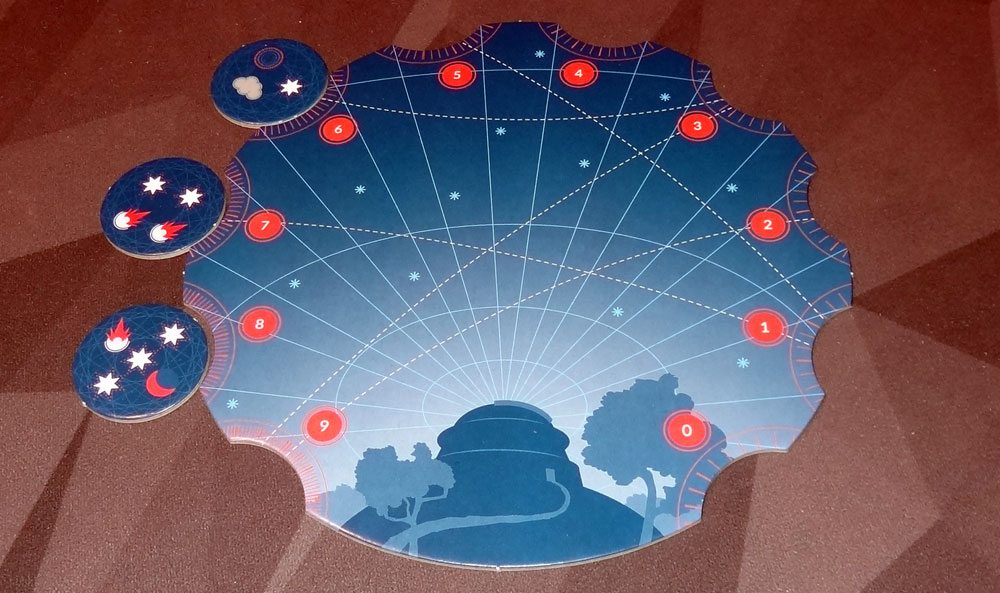
On your turn, you will take one of the following actions:
- Add a sky tile
- Move a sky tile
- Discover a sky tile
To add a sky tile, draw one from the stack, and place it face-up on the highest empty spot on the stargazer board. There can only be 3 sky tiles on the stargazer board at any time.
To move a sky tile, pick any of the tiles on the board, and move it down to the next open spot (jumping over other sky tiles if necessary).
To discover a sky tile, take a sky tile from the stargazer board and pay stardust as indicated by the cost on the stargazer board. (If you take a sky tile from the ‘0’ spot of the board, you get it for free.) You may pay with any combination of stardust tokens and stars on sky tiles you have previously discovered, but you do not get any change from sky tiles. Sky tiles used for discovery are discarded and removed from the game.
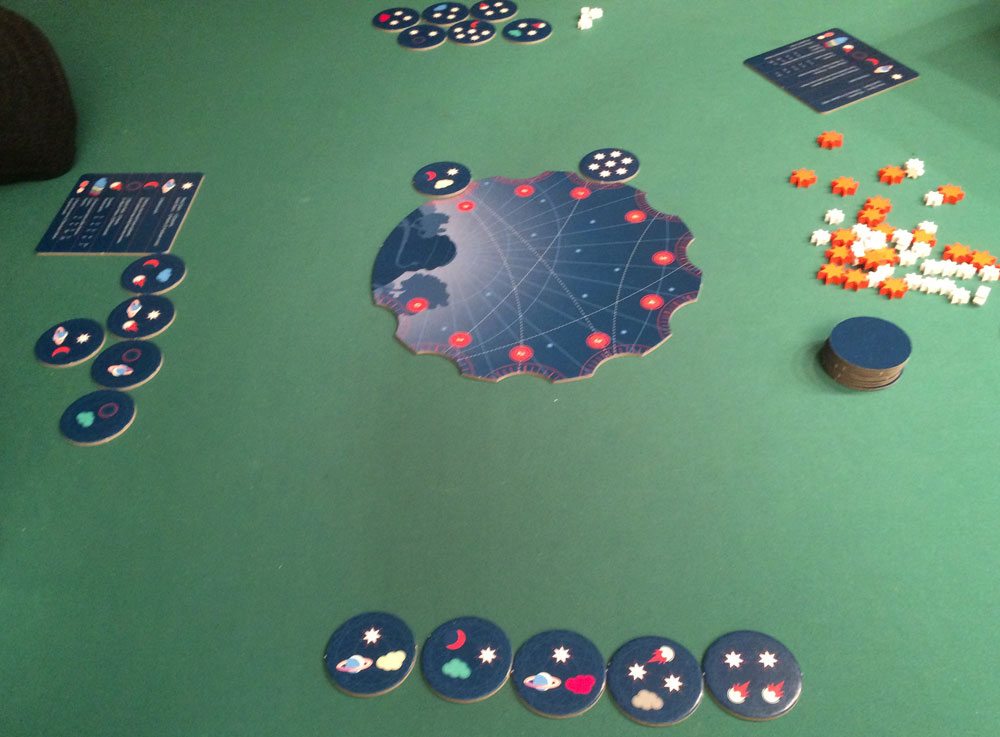
The game ends if:
- There is only one sky tile left on the board and none in the stack.
- No players have stardust tokens left.
Then you add up scores based on the objects you have on your collection of tiles.
- Stars: The player with the most stars gets 10 points; in a 3- or 4-player game, the player with the fewest stars loses 5 points.
- Planets: 5 points each.
- Moons: 3 points each, but each moon must have a planet to pair with it, or it is worth 0. (Each planet may be paired with only one moon.)
- Black Holes: Lose 5 points if you have one, or gain 15 points total if you have two or more.
- Comets: Worth more points the more you have. For instance, if you have one, it’s worth 3 points; if you have two, they’re worth 4 points each.
- Nebulae: 2 points each, plus you get a bonus for each unique color you have.
- Stardust: Any remaining stardust tokens are worth 1 point for every 2 stardust remaining.
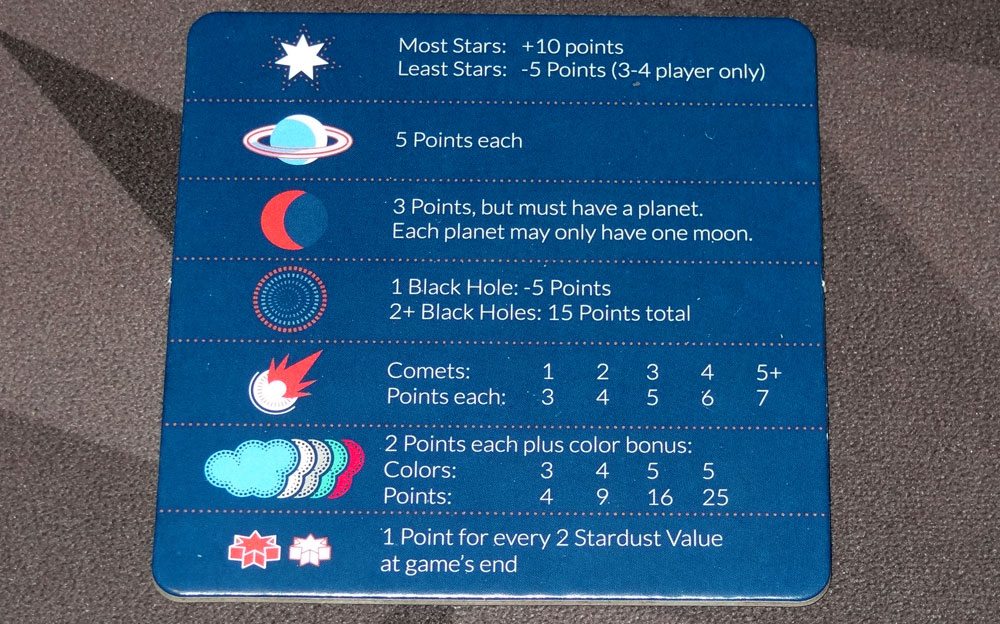
The Verdict
I first heard about StarFall at Gen Con 2016, when IDW showed me a prototype of the game, and I’ve been excited to try it because I’ve liked a lot of Scott Almes’ game designs. He’s the designer behind the Tiny Epic series of games from Gamelyn Games, as well as the time-traveling Loop, Inc. from Eagle-Gryphon Games.
StarFall is a clever little game that I would describe as a reverse auction: things start off expensive, and gradually decrease in value until somebody purchases it. The trick, though, is that if you make something cheaper, then you have to wait a full round before you’ll get a chance to buy it, so a lot of the strategy comes in figuring out how much you can afford to pay for a sky tile, and whether somebody else will snatch it up if you lower the price. Since there can only be 3 tiles on the board at a time, eventually somebody will have to buy something or move it down. The one-action-per-turn makes for some interesting and tough decisions throughout the game.
The other trick is that you don’t ever get more stardust tokens. Yes, you can spend the stars on your sky tiles, but usually that means giving up some points to do so—either because you’ll no longer have the most total stars, or because the sky tiles have other objects on them that you’ll be discarding. So your funds are mostly limited from the start, and it’s very easy for new players to spend everything to buy a few tiles, and then spend the rest of the game forced to lower prices on tiles for the players who still have something left to spend. On the flip side, if you hoard your stardust, thinking you’ll get to buy a whole bunch at a cheap price late in the game, you may find that the game ends before you’re ready, because all the other players are bumping tiles down off the board more quickly than you can purchase them.
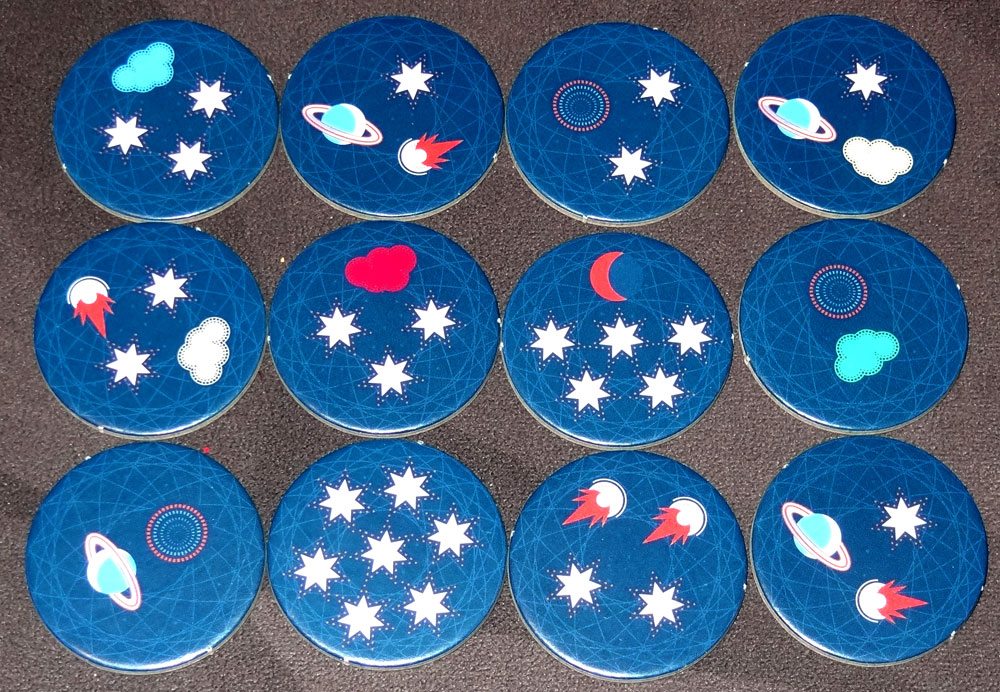
Honestly, I’ve never been very good at auction games, even though I enjoy them: I hoard my money when I should be spending it, or overpay on things that nobody else wanted. In this case, there’s a set-collection aspect for scoring that I can figure out, so I have at least an approach for considering how many points a particular tile is worth, but I’m still figuring out how much stardust I should spend on a number of end-game points. The downside, though, is that this can lead to a bit of min-maxing behavior, where players are looking around, calculating all possible scores for each available tile, and comparing numbers of stars with other players to see who’s ahead. If you have players who are prone to analysis paralysis or min-maxing, the game can extend beyond its estimated 30-minute length.
Thematically, it’s a little weird: it’s not really clear what “stardust” represents, or why all the astronomers at the Royal Hinterland Observatory are competing with each other for telescope time, or why certain sections of sky cost less stardust as time goes on—or particularly why the scores are set the way they are. Best to just accept that abstraction and go with it: it’s just a pretty game about stars and planets and comets. It’s a light auction/set-collection game with a little bit of an astronomy flavor but not a strong narrative, which is fine.
The rules are easy enough that younger players could easily pick it up: you only do one thing on your turn, and none of those things are complex. However, understanding how and when to spend your money, and being able to calculate potential score gains and losses on the fly will be trickier if you don’t have strong arithmetic skills, so younger kids playing against adults may be at a significant disadvantage. That said, it could be a good way to teach budgeting and some lessons on economics: prices fall when nobody buys something, but if you wait too long then somebody else gets a good deal. That, and if you spend all your money early, your options become very limited later in the game.
Overall, I think StarFall is a nice small game that comes in a nice large box. If it came in a Tiny Epic–sized box and cost $15–$20, I would recommend it without hesitation. At $30 in the larger box, I like it for its gameplay but its cost (both to your wallet and your shelf space) is a little more of a toss-up, and depends on whether that sort of thing bothers you at all. Check at your local game store, or order a copy online.
Disclosure: I received a review copy of this game.
